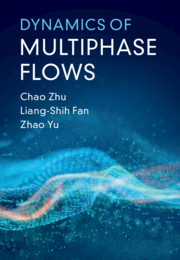Book contents
- Frontmatter
- Dedication
- Contents
- Preface
- Part I Principles
- 1 Introduction to Multiphase Flows
- 2 Continuum Modeling of Single-Phase Flows
- 3 Transport of Isolated Objects: Solid Particles, Droplets, and Bubbles
- 4 Interactions of Particles, Droplets, and Bubbles
- 5 Continuum-Discrete Tracking Modeling of Multiphase Flows
- 6 Continuum Modeling of Multiphase Flows
- 7 Numerical Modeling and Simulation
- 8 Measurement Techniques
- Part II Application-Based Analysis of Multiphase Flows
- Index
4 - Interactions of Particles, Droplets, and Bubbles
from Part I - Principles
Published online by Cambridge University Press: 10 September 2021
- Frontmatter
- Dedication
- Contents
- Preface
- Part I Principles
- 1 Introduction to Multiphase Flows
- 2 Continuum Modeling of Single-Phase Flows
- 3 Transport of Isolated Objects: Solid Particles, Droplets, and Bubbles
- 4 Interactions of Particles, Droplets, and Bubbles
- 5 Continuum-Discrete Tracking Modeling of Multiphase Flows
- 6 Continuum Modeling of Multiphase Flows
- 7 Numerical Modeling and Simulation
- 8 Measurement Techniques
- Part II Application-Based Analysis of Multiphase Flows
- Index
Summary
Chapter 4 discusses the mechanisms and formulation of various basic particle–particle interactions. The essential modes of these interactions include a pair of spheres interacting by head-on approaching or by wake attraction, flow through a uniformly suspended sphere, electrostatic field induced by the suspended charged particles, normal collision dynamics involving forces, deformation, contact area and duration for a pair of elastic spheres, van der Waals force, and capillary force due to liquid bridge between two particles. The chapter further discusses the nonidealized particle–particle interactions and associated formulation, including the radiation transport equation for thermal radiation within a particle cloud, collision dynamics with tangential friction and torsional traction of elastic spheres, inelastic collisions, and the concept of restitution coefficient, heat and charge transfer by particle collisions, and deformation, breakup, and coalescence of fluid particles. These particle–particle interactions are critical to the model formation of dense-phase multiphase flows.
Keywords
Information
- Type
- Chapter
- Information
- Dynamics of Multiphase Flows , pp. 126 - 171Publisher: Cambridge University PressPrint publication year: 2021
